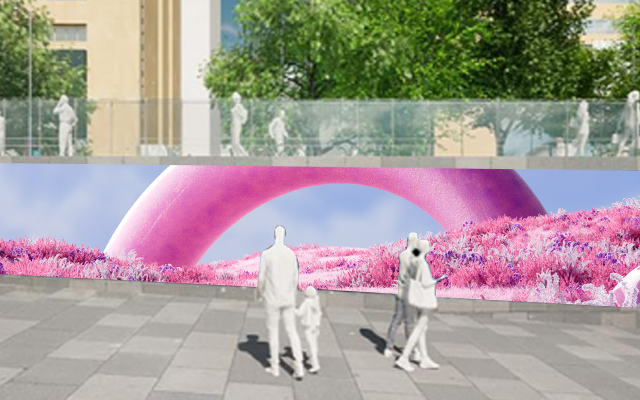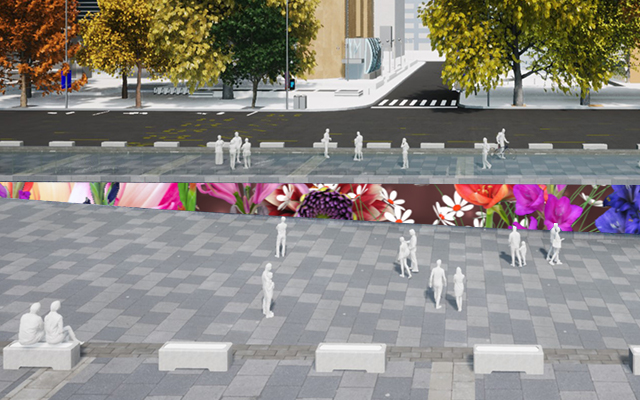The ‘Media Wall at Gwanghwamun Square’, installed with 53m-wide Full HD panels, is a media art platform where citizens can enjoy media artworks. The Media Wall exhibits various media artworks created by artists and citizens alike all year round.
Media Art @ Haechi Lounge is presented every day from 8 AM to 10 PM.



Another space, the story behind, the first theme is Flowering. Featuring KEEP US WEIRD and Custom X Studio, who have been steadily popular in the fields of 2D animation and 3D graphics, along with artist Seong-gong Kim, this exhibition presents a moment of discovering the sprouts beneath the ground on another side of Gwanghwamun Square and opening a new world. It expresses the potential possibilities of spring, adding vitality to the steps of those tired from daily life through artworks that capture endlessly blooming flowers and life growing in the desert.

The forest embodies silence spread across the land, awakening with the approach of giant footsteps. With each step taken, new life emerges, unfolding the power of spring. It captures the moment of nature's rebirth at the onset of spring, conveying a message of vitality and hope.

Flowering captures the infinite potential within the soil and its blooming beauty through flowers that bloom amidst golden sand dunes. The process of flowers blooming and withering on the sand signifies the birth and demise of life, and the beautiful cycle of nature.

"The Green Star" is a work that explores the entirety of nature, starting from the soil and land, which are the beginnings and foundations of both nature and human life, themed around the cycle of nature. It is expressed through media art, capturing the beauty of nature and the inherent power of life at the boundary between reality and imagination.

